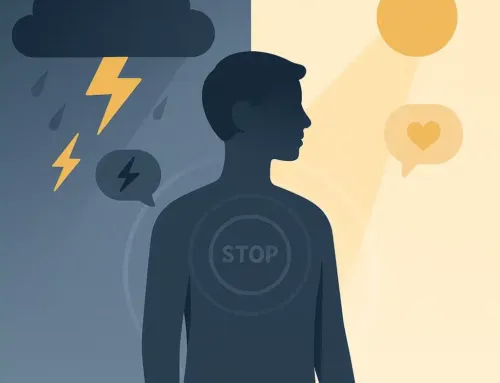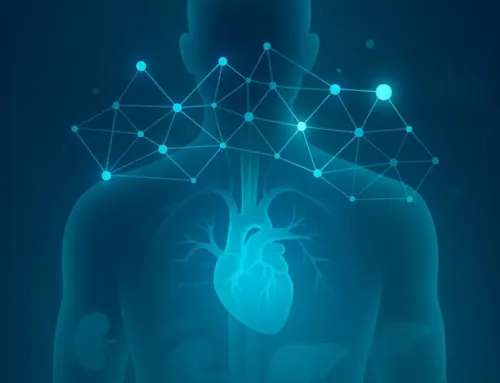
Approx. read time: 5.2 min.
Post: Fasting Around Your Menstrual Cycle: How to Fast Smarter, Not Harder
Intermittent fasting can be a powerful tool for better energy, weight management, and metabolic health—but for people with menstrual cycles, fasting isn’t one-size-fits-all. Your hormones shift throughout the month, and syncing your fasting strategy to these changes can make a huge difference in how you feel, how your body responds, and whether you’re supporting or stressing your system.
This guide breaks down how to fast smarter through each phase of the menstrual cycle, plus how to adjust during perimenopause and postmenopause. You’ll also get real-world tips to stay satisfied, nourished, and healthy while fasting.
Understanding the Menstrual Cycle
The average menstrual cycle is around 28 days, though it varies. It can be broken down into four key phases:
- Menstrual Phase (Days 1–5): Your period. Hormones are at their lowest.
- Follicular Phase (Days 6–13): Estrogen rises, energy increases.
- Ovulatory Phase (Days 14–16): Estrogen peaks, testosterone spikes.
- Luteal Phase (Days 17–28): Progesterone rises, appetite increases, PMS may kick in.
Each phase affects your metabolism, energy levels, mood, and even how your body handles fasting.
Fasting in Each Phase
1. Menstrual Phase: Go Gentle
Hormone snapshot: Estrogen and progesterone are at their lowest.
How you might feel: Fatigued, crampy, emotionally flat, low energy.
Fasting tip: Ease up. This is not the time for aggressive fasting.
Shorter fasts (12–14 hours) are ideal. Some people benefit from not fasting at all during heavy flow days. You’re already losing blood and nutrients—don’t add extra stress.
Stay satisfied:
- Eat iron-rich foods (spinach, red meat, lentils).
- Focus on warming, comfort meals: soups, stews, root vegetables.
- Include healthy fats (avocado, olive oil) to feel full longer.
- Prioritize sleep—your body’s recovering.
2. Follicular Phase: Prime Time for Fasting
Hormone snapshot: Estrogen rises; insulin sensitivity improves.
How you might feel: Energized, motivated, emotionally stable.
Fasting tip: This is your fasting sweet spot.
Try 16:8 or even 18:6 fasts here. Your body handles fasting and workouts better in this phase. Estrogen supports lean muscle growth and fat burning.
Stay satisfied:
- Include protein at each meal to support lean tissue.
- Load up on fiber (veggies, chia seeds, oats) to curb cravings.
- Try light cardio or strength training to take advantage of energy spikes.
- Keep hydration high—sometimes hunger is thirst in disguise.
3. Ovulatory Phase: Keep It Balanced
Hormone snapshot: Estrogen peaks; testosterone spikes.
How you might feel: High libido, confident, social, great energy.
Fasting tip: You can continue longer fasts (16:8), but watch your stress levels.
Your metabolism is efficient now, but some may experience sleep disruption or anxiety from pushing too hard. Listen to your body.
Stay satisfied:
- Keep blood sugar steady with balanced meals: protein + fat + complex carbs.
- Don’t skimp on carbs—your body is burning more energy.
- Focus on magnesium-rich foods (pumpkin seeds, leafy greens) to support mood.
- Consider lighter evening meals to sleep better.
4. Luteal Phase: Time to Scale Back
Hormone snapshot: Progesterone rises; estrogen falls.
How you might feel: Tired, bloated, hungry, moody—PMS hits.
Fasting tip: Dial it back. Your body is burning more calories, and it wants more food.
Shift to shorter fasts (12–14 hours). Trying to power through longer fasts can backfire with mood swings, binge eating, and sleep issues.
Stay satisfied:
- Eat more calories if you need to—it’s natural and okay.
- Focus on magnesium, B vitamins, and calcium to manage PMS.
- Complex carbs (quinoa, sweet potatoes, legumes) help balance cravings.
- Avoid high sugar foods—they can worsen mood swings.
Fasting During Perimenopause
Perimenopause is the 4–10 years before menopause when hormone levels begin to fluctuate wildly. Estrogen dips lower, but unpredictably. Progesterone declines steadily. Periods may be irregular, and PMS-like symptoms can get worse.
Common symptoms:
- Irregular cycles
- Weight gain, especially around the belly
- Poor sleep
- Mood swings
- Fatigue
- Brain fog
Fasting strategy:
- Use flexibility. On good energy days, try 14–16 hour fasts.
- On bad days (poor sleep, PMS, heavy flow), pull back to 12 hours or skip fasting entirely.
- Focus on circadian rhythm fasting—finish dinner earlier (by 7 p.m.) for better insulin sensitivity and sleep.
Stay satisfied:
- Emphasize protein (20–30g per meal) to protect muscle and stay full.
- Reduce alcohol and ultra-processed foods—they worsen hormone symptoms.
- Magnesium, omega-3s, and adaptogens like ashwagandha can help regulate stress and mood.
Fasting Postmenopause
Once you’ve gone 12 months without a period, you’re officially postmenopausal. Estrogen and progesterone are both low and stable now. You no longer cycle, but your body still responds to stress, nutrition, and fasting.
Common symptoms:
- Slower metabolism
- Muscle loss
- Insulin resistance
- Sleep issues
- Increased inflammation
Fasting strategy:
- Start slow if you’re new. Try 12–14 hour fasts and assess how you feel.
- Most postmenopausal women do well with 14–16 hour fasts a few days a week.
- Focus on early time-restricted eating (eat breakfast, skip late-night snacks).
- Avoid prolonged fasts (>24 hours) unless under supervision.
Stay satisfied:
- Prioritize strength training—pair it with protein-rich meals.
- Support insulin sensitivity with fiber-rich foods and apple cider vinegar.
- Keep meals balanced: don’t fear healthy fats.
- Don’t under-eat. Your body needs nutrients now more than ever.
General Fasting Tips for Women
- Track your cycle – Use an app or journal to plan fasts around energy levels.
- Watch stress – Fasting is a stressor. If you’re under emotional or physical stress, ease up.
- Sleep matters – Fasting poorly when sleep-deprived can do more harm than good.
- Listen to your body – Hunger, irritability, fatigue? That’s data. Adjust.
- Hydrate like crazy – Water, herbal teas, and electrolytes make fasting smoother.
Final Thoughts
Fasting isn’t about willpower—it’s about working with your body, not against it. When you sync your fasting approach to your menstrual cycle—or adjust it during perimenopause and postmenopause—you reduce stress and boost results.
Your hormones are powerful. Learn their rhythm, respect their signals, and use fasting as a flexible tool to support—not sabotage—your health.
Related Videos:
Related Posts:
What Fasting Really Does to Women’s Metabolism and Why It Might Boost Oxidative Fibers
Period Hack: The Most Effective Way for Women to Eliminate Belly Fat and Build Muscle
Intermittent Fasting (IF) and Protein can boost your Gut Microbiome Diversity
Embracing Life’s Cycles: Lessons on Growth, Resilience, and Purpose









